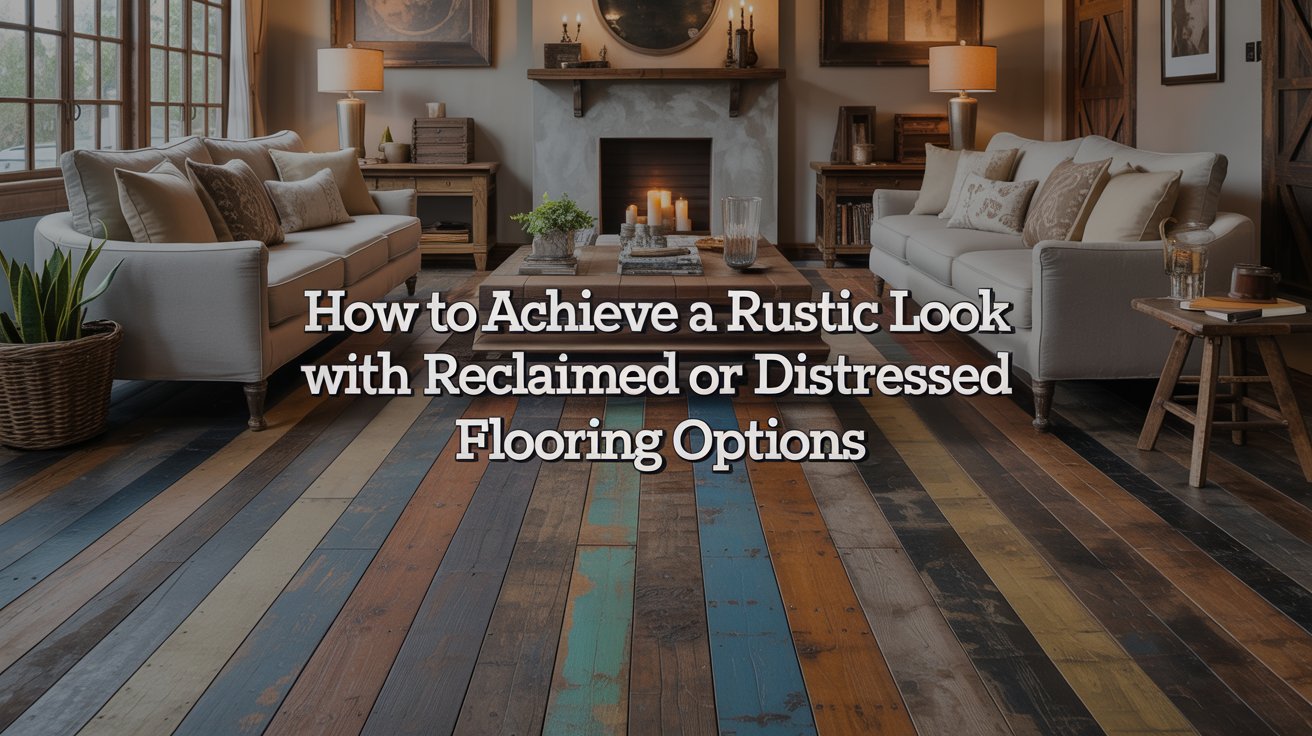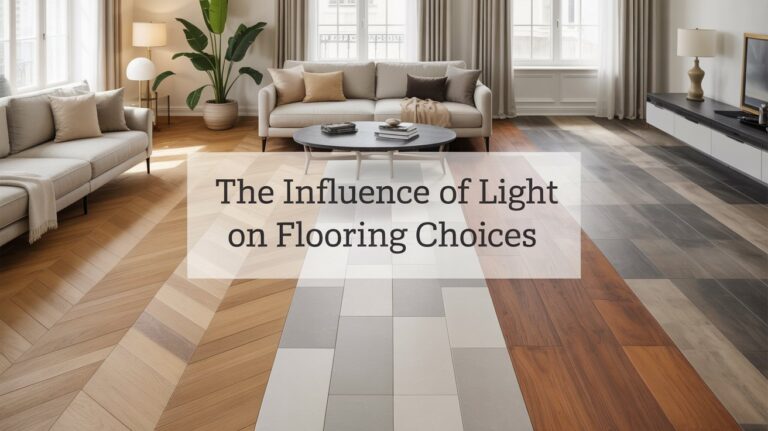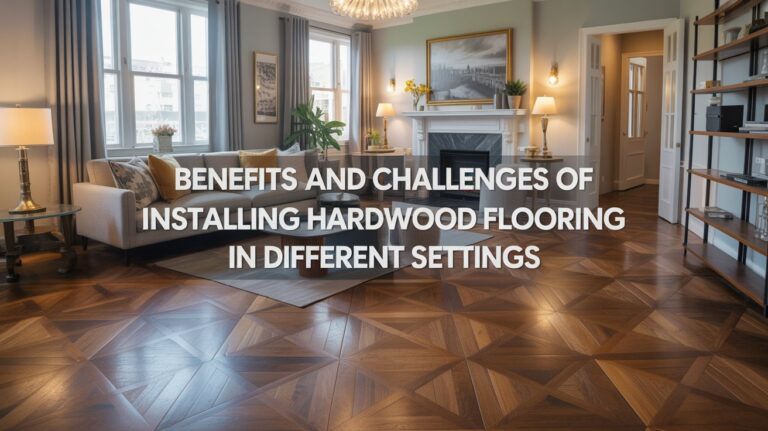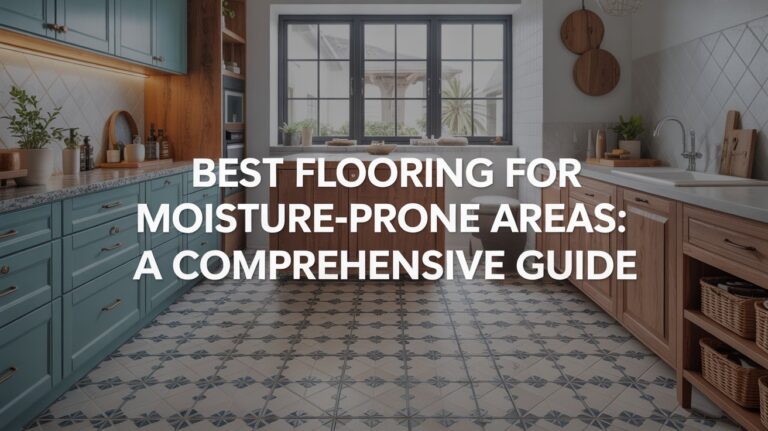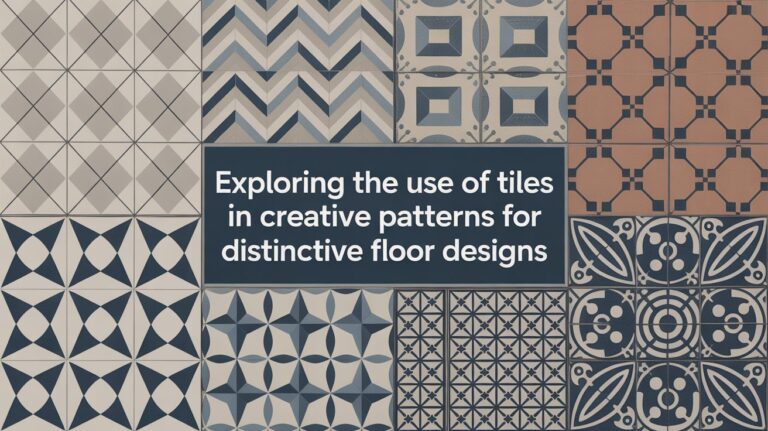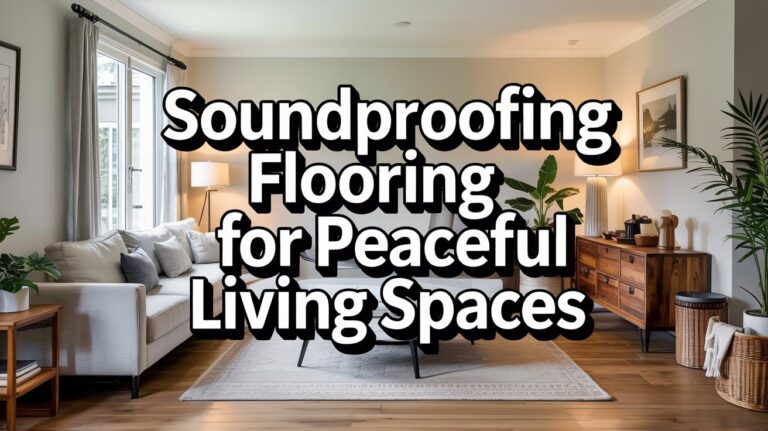How to Achieve a Rustic Look With Reclaimed or Distressed Flooring Options
I have been, or can be if you click on a link and make a purchase, compensated via a cash payment, gift, or something else of value for writing this post. As an Amazon Associate, I earn from qualifying purchases. Please read my full Affiliate Disclosure for more information.
To nail a rustic look with reclaimed or distressed flooring, start with authentic textures: weathered, hand-scraped, or salvaged planks that show real grain and patina. Opt wide boards for character, or engineered options for stability. Pair warm neutrals with simple decor, and keep tones consistent across spaces. Choose low-VOC finishes and sustainable sources to boost eco-friendly appeal. Maintain with gentle care, mats, and protective pads. If you keep going, you’ll uncover even more ways to layer depth and charm.
Key Takeaways
- Embrace reclaimed materials like barn boards or shipyard planks for authentic patina and durable, eco-friendly character.
- Choose distressed or hand-scraped finishes to enhance grain, knots, and texture with controlled aging.
- Use wide plank layouts and consistent wood tones to create spacious, cohesive rustic spaces.
- Pair warm neutrals with bold accents sparingly to highlight the flooring as a focal point.
- Opt for low-VOC finishes, sustainable sourcing, and modular, repairable installation for long-term value.
Understanding Rustic Flooring: Key Concepts and Benefits
Understanding rustic flooring starts with appreciating its texture and character: it brings warmth, history, and a touch of nature into any space. You’ll grasp how variations in grain, tone, and patina create depth, not chaos. This look emphasizes durability, easy maintenance, and timeless appeal, making it practical for real-life living. You’ll notice that rustic floors pair beautifully with modern fixtures, elevating both traditional and contemporary aesthetics. When you value Vintage charm and Eco conscious choices, you invest in materials that age gracefully and minimize waste. Clarity about these concepts helps you choose options that feel authentic and sustainably sourced.
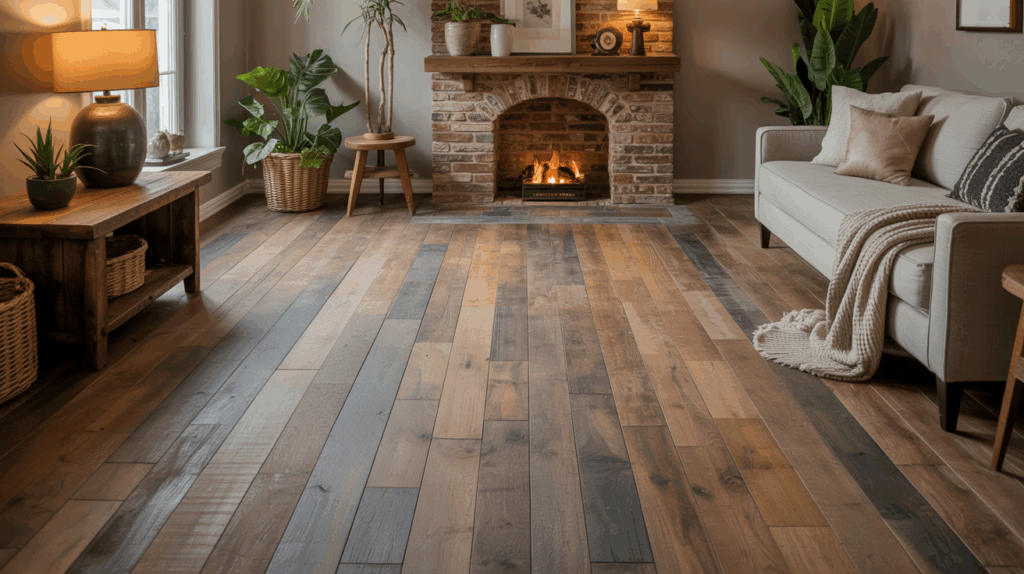
Reclaimed Wood vs. Distressed Wood: What’s the Difference
Reclaimed wood and distressed wood both bring character to floors, but they’re not the same story. You’ll notice reclaimed is salvaged from old structures, aged and knotty, with genuine history baked in. Distressed wood, by contrast, is newly manufactured or finished to look aged, with engineered textures and deliberate wear. Reclaimed delivers authentic vintage charm and often higher eco conscious choices, yet supply can be limited and pricing variable. Distressed offers consistency, controlled color, and quicker installation. Your choice hinges on provenance and mood: embrace authentic heritage, or enjoy a crafted illusion with predictable performance and impact.
Popular Reclaimed Materials: Sources and Styles
You’ll encounter a spectrum of reclaimed wood varieties, each bringing its own character and story to your floors. By prioritizing sustainable sourcing, you’ll support ecosystems while securing materials that age beautifully. From classic barn beams to modern recycled planks, discover style inspirations and trends that align with your space and values.
Reclaimed Wood Varieties
From ancient beams to salvaged heartwood, reclaimed wood varieties offer character that factory-fresh floors can’t match, and they come from a wide range of sources—old barns, shipping crates, and factory floors are just the beginning. You’ll find options like oak, pine, chestnut, and maple with distinctive patterns, patina, and grain that whisper vintage charm. Material durability shines here, as these boards endure wear while gaining warmth. Choose surface treatments that celebrate texture—hand-scraped, wire-brushed, or hand-planed—to emphasize history without sacrificing stability. With careful selection, you’ll enjoy depth, resilience, and a timeless, cohesive rustic appeal.
Sourcing Sustainable Materials
Sourcing sustainable materials starts with knowing where your reclaimed boards come from and how they’re transformed into lasting floors. You’ll investigate origins, recovery practices, and certifications, choosing suppliers who prioritize responsible dismantling and traceable mills. Consider urban aesthetics, where texture, patina, and knot work tell a story without waste. Favor materials with proven material durability, from stable species and proper drying to low-emission finishes. Ask for performance data, maintenance needs, and lifecycle impacts. Compare delivery timelines, waste-reduction programs, and reuse in local projects. With deliberate sourcing, you align style, ethics, and longevity for genuinely responsible, visually compelling flooring.
Style Inspirations & Trends
Textures and tones shape the mood of a room, so let’s plunge into reclaimed materials that fuse character with modern versatility. Style inspirations emerge from sources like vintage barn boards, shipyard planks, and weathered terrazzo, each offering a distinct narrative. You’ll find popular materials balancing rugged texture with refined balance—perfect for modern minimalism or cozy eclectic looks. Pair reclaimed oak with matte metal accents for luxury accents that feel timeless. Consider wide planks for drama, narrower boards for refinement, and mixed grains for texture without visual clutter. Trends favor sustainable storytelling, warm authenticity, and durable finishes that age gracefully with your interior.
Finishes and Textures: Weathered, Hand-Scraped, and Salvaged Looks
Weathered, hand-scraped, and salvaged looks transform plain boards into character-filled surfaces, each with a story etched in grain and patina. You’ll explore decorative finishes that emphasize depth, where subtle abrasions reveal history without overpowering space. Textural effects matter: you want tactile interest that ages gracefully, not roughness for its own sake. By choosing controlled distressing, you align warmth with modern restraint, balancing knots, saw marks, and soft flecks. The result is cohesive versatility—rugged charm that still reads refined. Use these cues to guide color, sheen, and sealant decisions, ensuring a durable, cohesive rustic ambiance throughout your home.
Installation Options: Wide Planks, Engineered, and Floating Floors
Wide planks, engineered layers, and floating designs each bring a distinct installation rhythm to your space, so pick the approach that honors your site, budget, and lifestyle. You’ll compare feel, stability, and maintenance while planning layout. Wide planks deliver character with minimal joints, ideal for expansive rooms paired with area rugs to soften gaps. Engineered floors resist humidity and stay flatter, offering reliable stability under radiant heat or subfloors. Floating floors install quickly, with easy refreshes and fewer fasteners, great for renters or evolving schemes. Consider wall treatments that finish the look, and guarantee transitions blend with your chosen method.
Maintenance Tips: Caring for Rustic Surfaces to Last
Start with a simple cleaning routine that keeps dirt and grit from scratching your rustic surfaces. Build in protective maintenance steps — like felt pads, mats, and seasonal checks — to extend life and beauty. I’ll show you how these essentials protect your floors long-term, so you can enjoy the warmth without worry.
Cleaning Routine Essentials
Maintaining rustic floors and surfaces starts with a simple, regular routine: a light daily wipe to remove dust, followed by a weekly upkeep that uses the gentlest cleaners safe for your finish. You’ll rely on careful techniques to protect grain and patina, and you’ll master stain removal without harsh scrubbing.
- Cleaning techniques that respect wood or stone finish
- Gentle solutions tested on inconspicuous areas
- Quick spot treatment for spills
- Air-dry cadence to avoid moisture stress
- Stain removal steps documented for future reference
Protective Maintenance Steps
Protective maintenance isn’t optional—it’s the shield that helps rustic surfaces keep their character while lasting longer. You’ll want a simple, repeatable routine: dust with a soft cloth, wipe spills promptly, and avoid standing moisture. Use furniture finishes thoughtfully—reapply or refresh high-traffic areas to prevent dulling and wear. Choose cleaners labeled for wood or reclaimed surfaces, avoiding harsh solvents. Control interior lighting to reduce UV exposure that can fade tones; rotate lamps and use UV-filtering bulbs. Protect floors with felt pads, mats, and furniture lifts to prevent scratches. Regular inspections catch nicks early, preserving warmth, texture, and the room’s honest story.
Design Pairings: Colors, Patterns, and Room Type Coordinations
When pairing rustic flooring with colors, patterns, and room types, you can create spaces that feel both cohesive and lived-in rather than characterless. You’ll want color coordination that echoes natural tones, patterns that balance texture, and room design that respects flow and function. Choose warm neutrals as a base, add bold accents sparingly, and align wood grain with furniture shapes. Here are design pairings to contemplate:
- Color coordination: pair earthy hues with crisp whites for contrast
- Patterns: mix wide planks with subtle textiles
- Room type: open layouts feel grander with simple decor
- Accents: metal or stone finishes for depth
- Cohesion: repeat a single wood tone throughout
Budget and Sustainability: Making Smart, Eco-Friendly Choices
Smart budgeting isn’t about cutting corners on quality—it’s about choosing durable, low-impact materials and methods that pay off over time. You’ll prioritise eco friendly practices that reduce waste, emissions, and long-term maintenance. Start with reclaimed boards or certified sustainable species; these options often cost less upfront and mature beautifully with character. Seek low-VOC finishes, simple installation, and modular flooring that’s repairable rather than replaceable. Evaluate life-cycle costs, not just sticker price—durability, repairability, and resale value matter. Opt for cost effective options that harmonise style and sustainability, proving you can achieve rustic charm while protecting resources for future projects.
Conclusion
Rustic flooring embraces warmth, character, and a story you can walk on. By choosing reclaimed or distressed planks, you’ll add depth that’s both timeless and unique. Pair wide boards with muted palettes, or let weathered textures pop against smooth neutrals. Maintenance stays simple with regular dusting and gentle cleaners. You’ll love the durability and eco feel, and your spaces will feel more welcoming with every nook you define. Ready to transform your home with honest, stylish grit?
